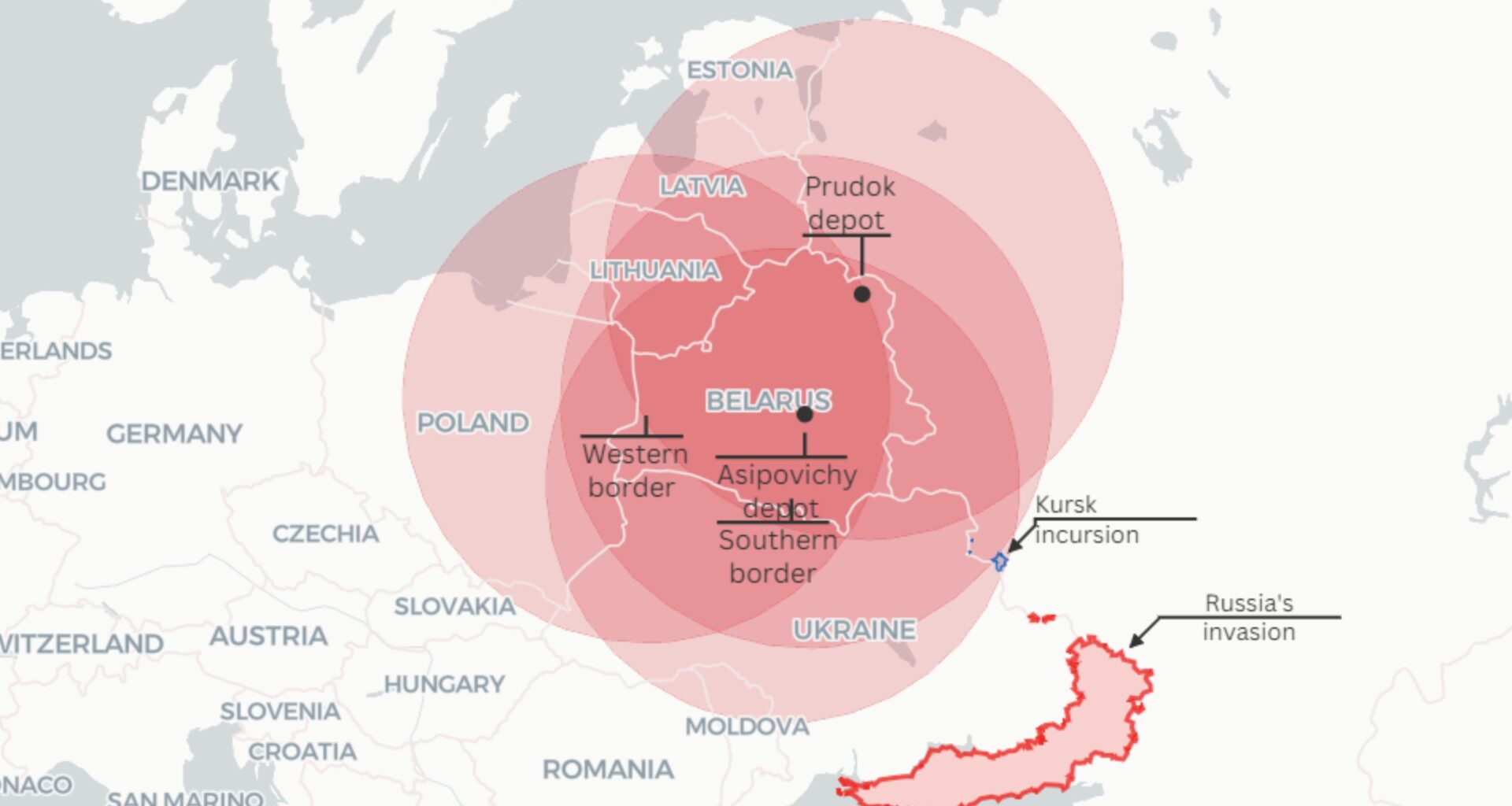Russia has stationed tactical nuclear weapons in Belarus, marking the first deployment of its nuclear arsenal outside Russian territory since the Cold War.
Belarusian President Alexander Lukashenko confirmed the presence of the weapons, stating, “I have brought nuclear warheads here, and not just a single dozen of them.” He also said his country is preparing facilities for the planned deployment of Moscow’s newest hypersonic ballistic missile.
The stationing of these tactical weapons in Belarus, which shares a 673-mile border with Ukraine, enables Russian aircraft and missiles to target potential sites more efficiently. It also significantly extends Russia’s ability to reach several NATO allies in Eastern and Central Europe.
A map and recent satellite analysis by Newsweek highlight two primary locations: a military depot near Asipovichy in central Belarus and a potential storage site in Prudok, which is closer to the northeastern border. These sites bring Russia’s nuclear strike capability hundreds of miles closer to NATO allies.
The sites’ proximity to NATO members Poland, Lithuania and Latvia heightens the potential threat. The Asipovichy depot, 120 miles from Ukraine’s border, now has a triple-layered security fence and new nuclear storage facilities. The Prudok site is even closer to NATO’s eastern flank.
Experts say these upgrades are part of Russia’s strategy to bolster its nuclear deterrent along NATO’s eastern border.
Russian President Vladimir Putin previously announced the completion of “special storage” facilities in Belarus, reinforcing Moscow’s nuclear posture amid heightened tensions with the West. The move comes after Putin updated Russia’s nuclear doctrine, lowering the threshold for using such weapons. The new policy allows for a nuclear response even to conventional attacks by countries supported by nuclear-armed states.
Putin’s nuclear update followed President Joe Biden‘s decision to authorize Ukraine to fire U.S.-supplied missiles deeper inside Russian territory. This decision fulfilled a monthslong request from Ukrainian President Volodymyr Zelensky and coincided with reports of North Korean troops assisting Russia.
Unlike intercontinental ballistic missiles designed to destroy entire cities, tactical nuclear weapons are less powerful and intended for use on the battlefield. While Russia has not disclosed the total number of nuclear weapons stationed in Belarus, Lukashenko said his country now hosts several dozen of them.
“They haven’t even noticed when we brought them here,” Lukashenko remarked, referring to the West’s inability to track the deployment.
Earlier this year, joint nuclear drills were conducted by Russian and Belarusian forces. These exercises involved Russia-supplied Iskander short-range ballistic missiles, which can carry nuclear warheads, and aircraft equipped to deploy nuclear bombs.
Belarus has about 30 facilities for nuclear-capable ballistic missiles left over from the Cold War era, when it was part of the USSR and hosted Soviet nuclear weapons.
